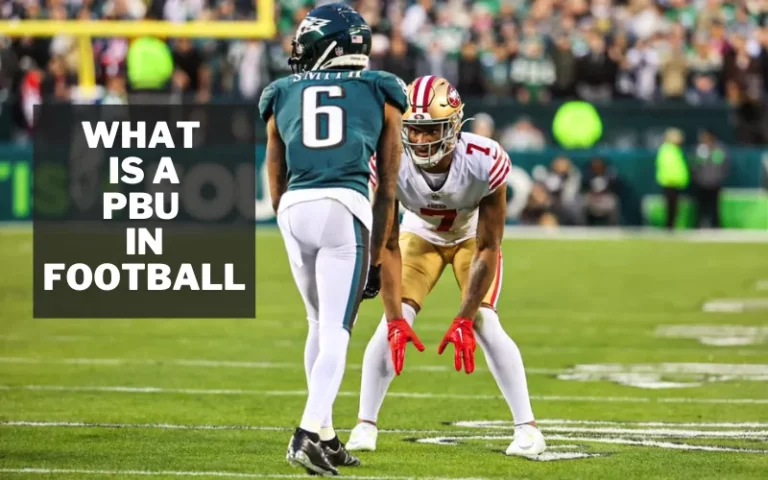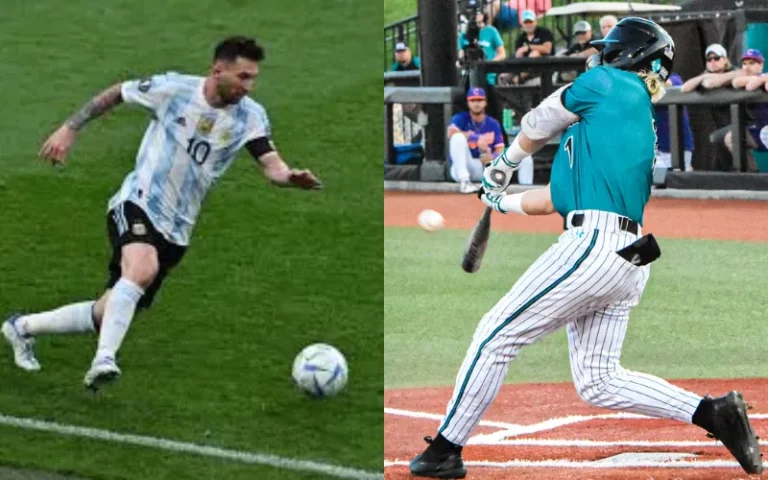The Screen Pass in Football? Beginner Guide | Detail Explanation
You may gain yards and finally score in football by either running with the ball or passing it. Despite how straightforward that may sound, there are many different passes and runs that both offences and defences must be familiar with. The term “screen pass” refers to one of these numerous passes. Screen passes are complex to execute, despite their appearance. Screen passes depend on the offence, selling the concept, and each player’s perfect timing. So, what is a screen pass in football? Then read further.
What is Screen Pass?
A screen throw is a quick pass to a qualified receiver placed close to the line of goal that calls for offensive linemen to rush down the field and block for the receiver. When throwing a screen pass, the quarterback must release the ball rapidly, and the offensive linemen must get in front of the receiver to block and help create openings for the ball carrier.
What is Screen Pass NFL?
In the NFL, the screen pass is still a popular and successful offensive tactic (National Football League). Teams use screen passes to counter aggressive pass rushes and exploit defensive mismatches.
In an NFL screen pass, the quarterback briefly drops back before throwing the ball to a specific receiver who is positioned behind the offensive line either laterally or slightly forward. The offensive linemen rapidly drop their blocks and advance to the receiver’s side to act as blockers. In the meantime, the defence, which frequently anticipates a normal pass or play, can be caught off guard, offending a chance to gain a lot of ground.
Depending on the offensive plan and personnel of the team, screen passes can be made to various players, including tight ends, wide receivers, and running backs. Because they can gain yards after the catch, running backs are frequently the main targets for screen passes.
Screen passes carry some risks even though they can be very effective. The defence can swarm the receiver if they correctly read the play or if the quarterback’s timing is incorrect, which might result in little to no yardage and even the possibility of turnovers.
Screen passes are frequently used by NFL teams as part of their overall offensive game plans, especially in circumstances like third-and-long, to shorten the distance to a first down or to manage the tempo of the game. A key tool for offensive coordinators and quarterbacks, the screen throw depends on accuracy, timing, and the element of surprise for success. That Is Also Called bubble screen in football.
Types of Screens in Football 101:

Football offences use a variety of screens to take advantage of the defensive unit’s boldness and open up space for the ball carrier. Particular players are positioning and blocking strategies for each type of screen. Here are a few typical football 101 screen types:
1) Running Back Screen:
A running back positioned behind the offensive line is where the quarterback delivers the ball in this kind of screen. The offensive linemen let the defenders rush the quarterback before releasing their blocks and switching to lead blocking for the running back once the ball is passed. After catching the pass, the running back follows the blockers downfield to find a spot where he may gain ground.
2) Wide Receiver Screen:
When a wide receiver screen is used, the quarterback short passes to the wide receiver outside the offensive formation. To clear a passage for the receiver holding the ball, the offensive linemen and other receivers lined up as blockers. The pass is caught by the intended recipient, who attempts to capitalize on the blocking by making plays.
3) Bubble Screen:
A broad receiver screen variant is a bubble screen. The targeted receiver is positioned on this play slightly to one side and just behind the field goal line. The receiver goes laterally along the field line while reading the blocks set up by the offensive players while the quarterback rapidly tosses the ball to him.
4) Tight End Screen:
The tight end, frequently positioned close to the offensive line, will receive a brief pass from the quarterback as part of the tight end screen. The offensive linemen leave their blocks and take over as the tight end’s lead blockers as he attempts to gain yards with the assistance of his blockers after receiving the ball.
5) Slip Screen:
When the offensive linemen position up for a standard pass block but then swiftly release to become blockers for a screen throw, this is known as a slip screen. The objective of the play is to surprise the defence and produce a significant gain.
6) Tunnel Screen:
In a tunnel screen, the quarterback hands off to a receiver while the offensive linemen release to block in the direction of the receiver. The receiver catches the pass and then enters the linemen’s tunnel to continue running.
Best Football Screen Plays:
A particular football screenplay’s effectiveness may change based on the offensive scheme, personnel, and opponent’s defensive plan. I can, however, name a few previously successful football-themed films that have been successful in a variety of contexts:
- The Philly Special
- Wide Receiver Tunnel Screen
- The Screen Four
- Slip Screen
- Running Back Middle Screen
- Bubble Screen
Always remember that a screenplay’s success depends on correct execution, timing, and the element of surprise. The greatest screenplays will adjust to the team’s strengths, the opposition’s defence, and the game’s circumstances. Coaches frequently base their play designs on their knowledge of their players and their opponent’s tendencies.
It’s a particular kind of pass designed to lead the defence to believe that the play will involve a deep pass while, in reality, it will involve a short pass.
The wide receiver bubbles away from the goal line, and the quarterback is on the bubble screen. The most typical variation has one wideout choosing the defence back and allowing the receiver to run just after the catch.
Yes, A screen pass is a forward pass delivered to a receiver behind the goal line.






